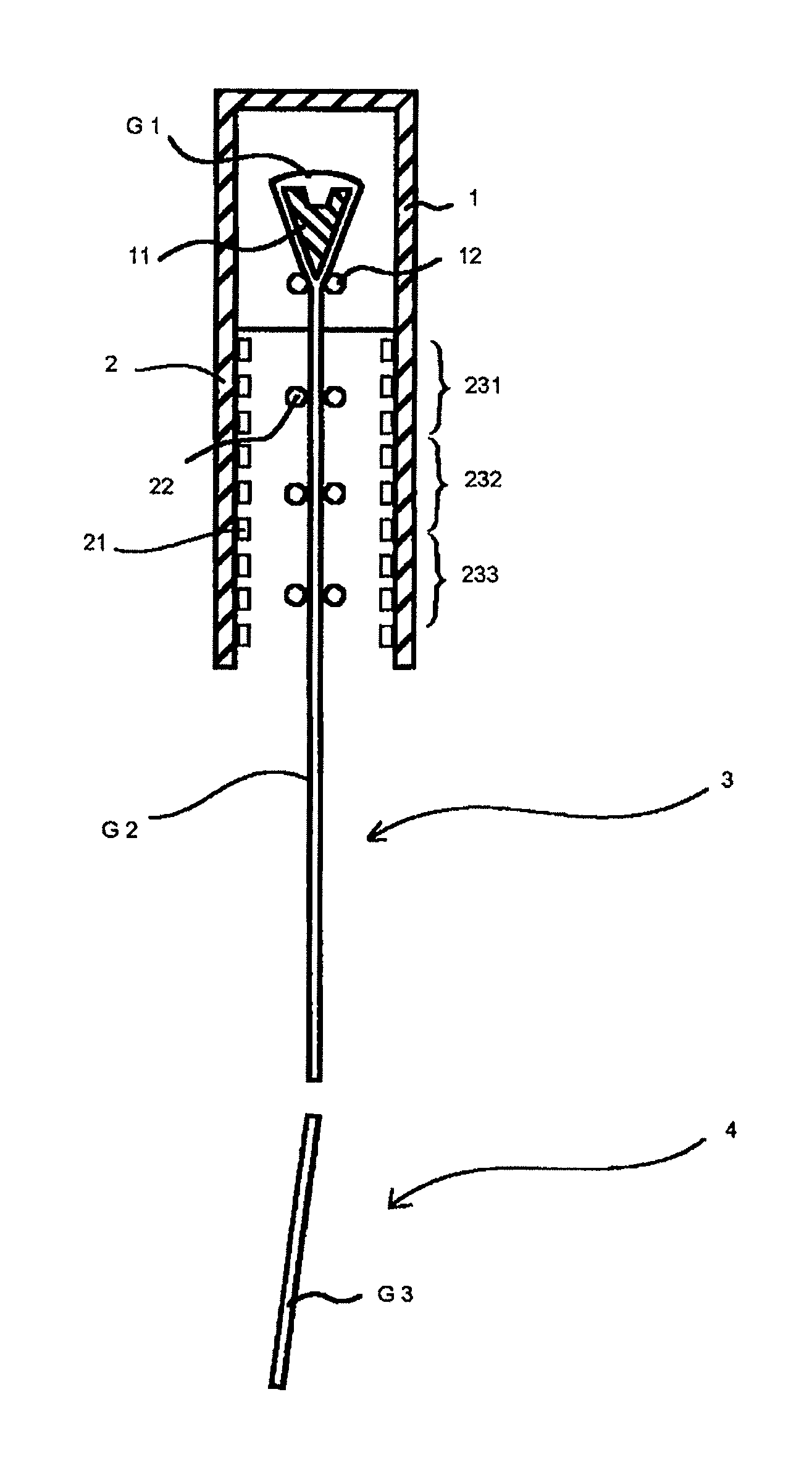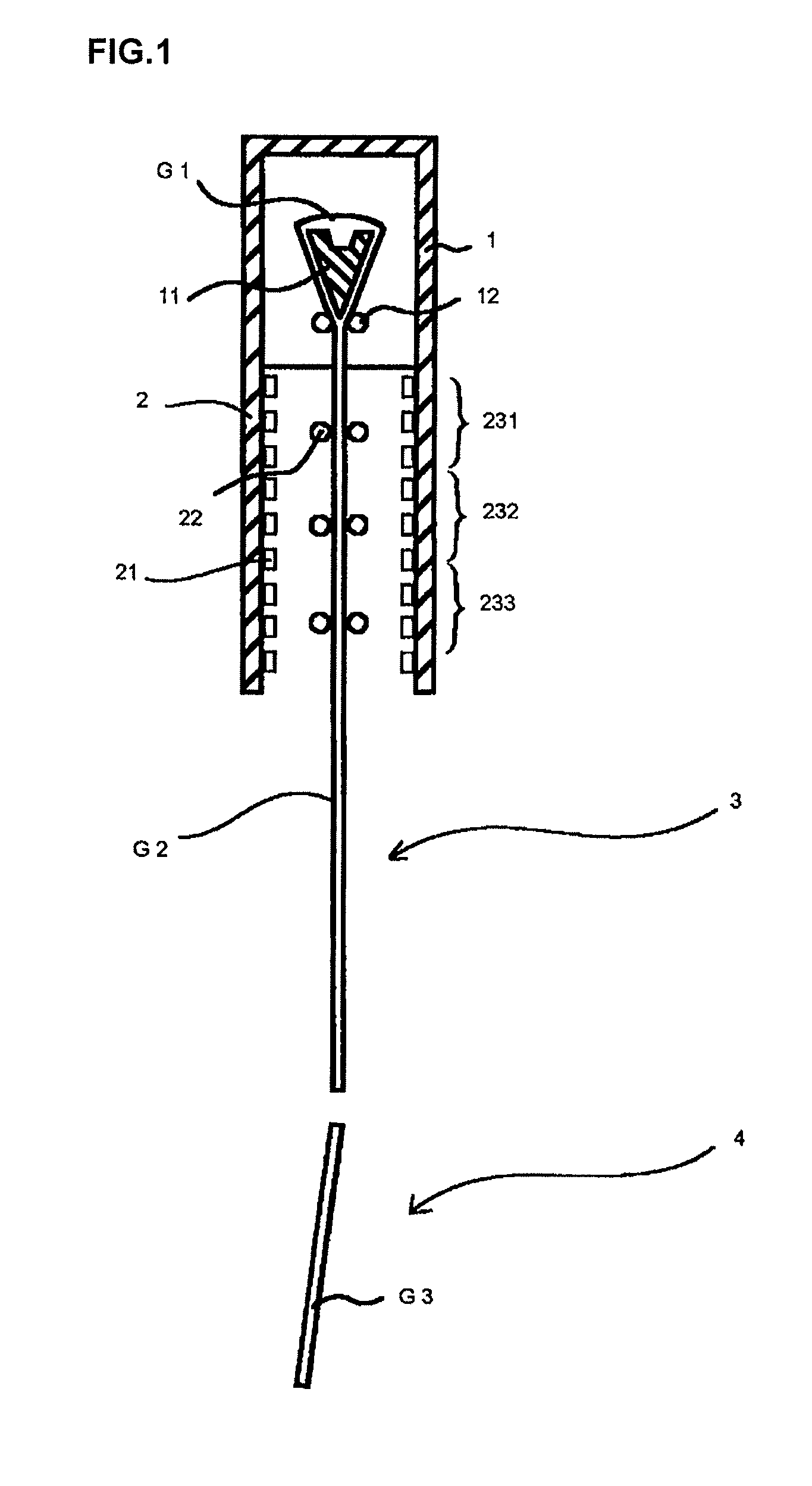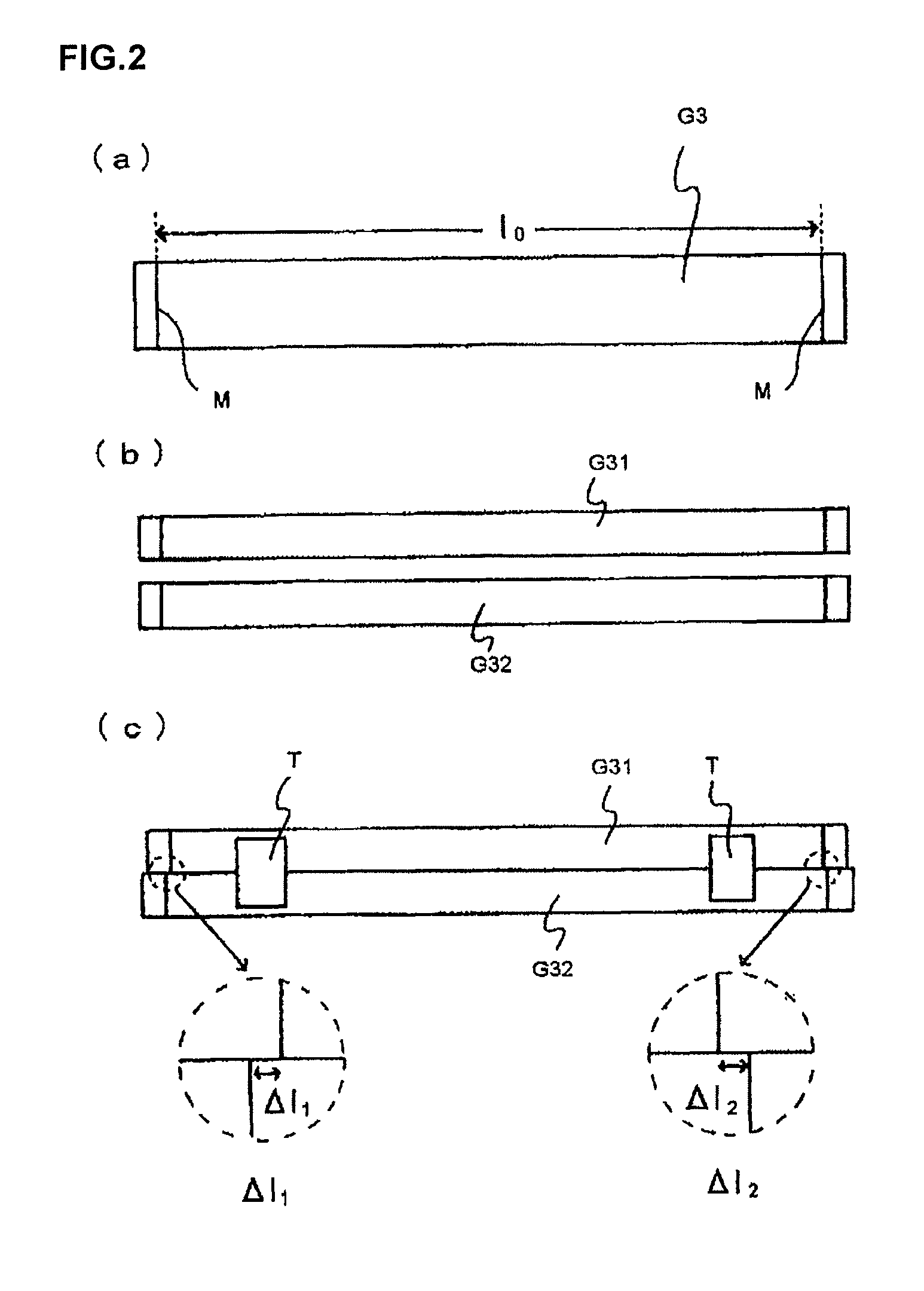Method for producing glass substrate and glass substrate
a technology of glass substrate and glass substrate, which is applied in the field of glass substrate, can solve the problems of reducing the surface quality of the substrate and difficulty in making the sheet thin, and achieve the effect of excellent surface quality and small sheet thickness
- Summary
- Abstract
- Description
- Claims
- Application Information
AI Technical Summary
Benefits of technology
Problems solved by technology
Method used
Image
Examples
examples
[0067]The present invention is hereunder described in detail by reference to the accompanying drawings.
[0068]FIG. 1 is an outline front view showing production equipment for a glass substrate in carrying out the present invention. The production equipment is for producing a glass substrate according to an overflow down draw method, and it includes a forming furnace 1 having a trough-shaped forming body 11 and cooling rollers 12 therein in this order from the top thereof; an annealing furnace 2 disposed in a lower portion of the forming furnace 1 and having heaters 21 and guide rollers 22 therein; and a cooling section 3 and a cutting section 4 provided in a lower portion of the annealing furnace 2.
[0069]The trough-shaped forming body 11 has a nearly wedge-shaped cross section and allows a molten glass G1 to be fed to overflow out from the top thereof and fuse at the bottom thereof to form a glass ribbon G2. The annealing furnace 2 anneals the glass ribbon G2. In detail, in the insid...
PUM
| Property | Measurement | Unit |
|---|---|---|
| thickness | aaaaa | aaaaa |
| temperature | aaaaa | aaaaa |
| thickness | aaaaa | aaaaa |
Abstract
Description
Claims
Application Information
 Login to View More
Login to View More - R&D
- Intellectual Property
- Life Sciences
- Materials
- Tech Scout
- Unparalleled Data Quality
- Higher Quality Content
- 60% Fewer Hallucinations
Browse by: Latest US Patents, China's latest patents, Technical Efficacy Thesaurus, Application Domain, Technology Topic, Popular Technical Reports.
© 2025 PatSnap. All rights reserved.Legal|Privacy policy|Modern Slavery Act Transparency Statement|Sitemap|About US| Contact US: help@patsnap.com



